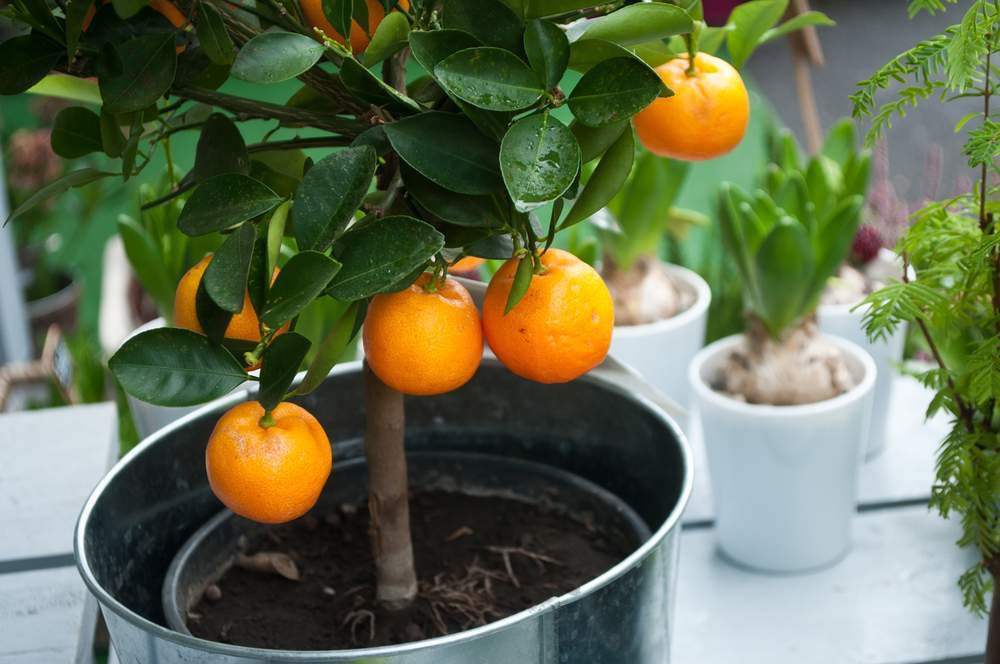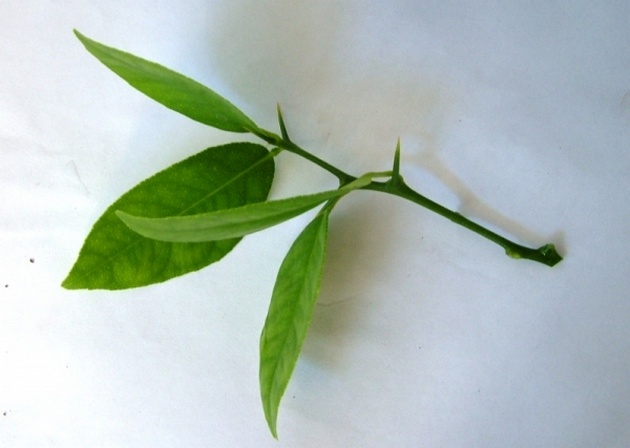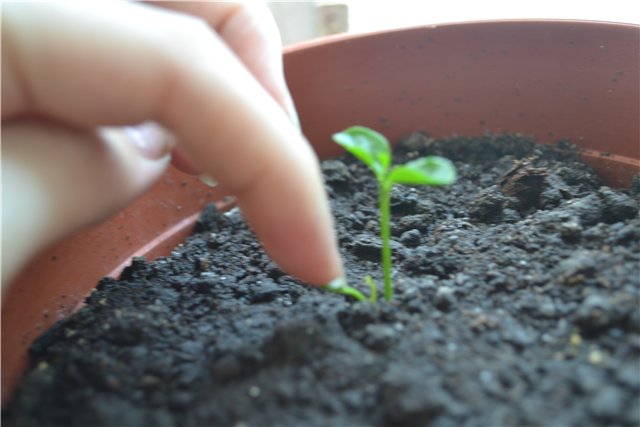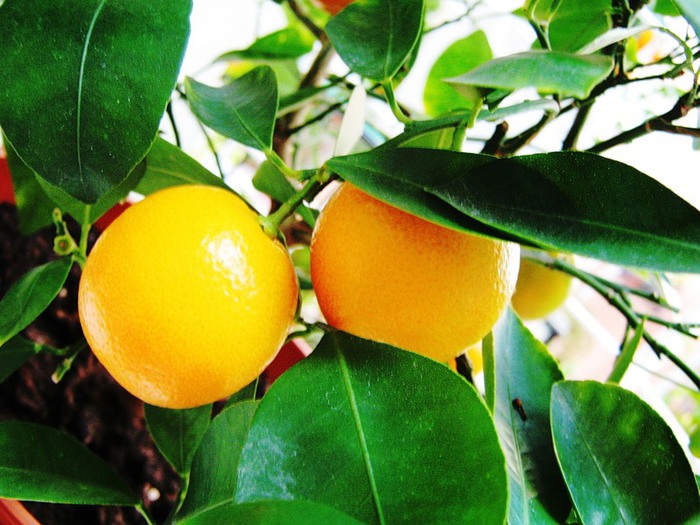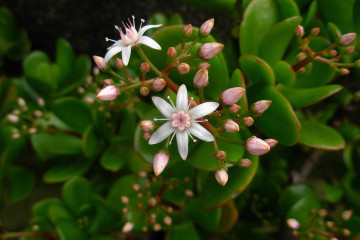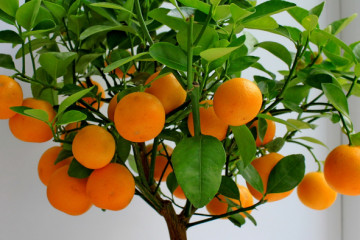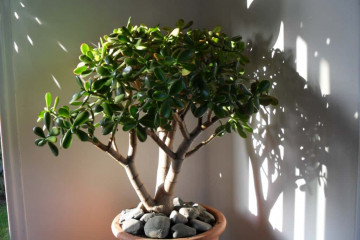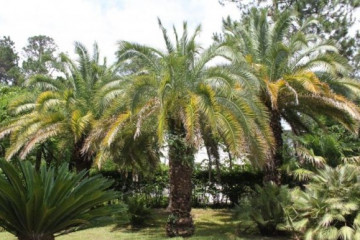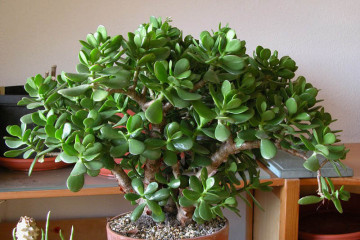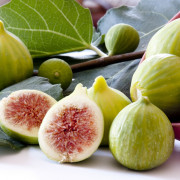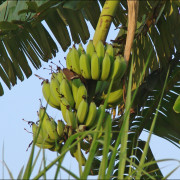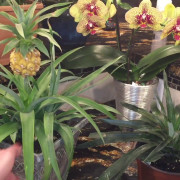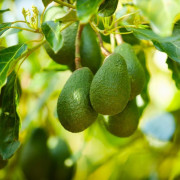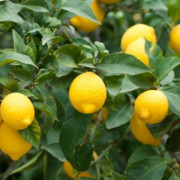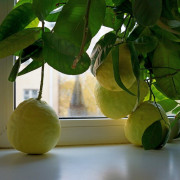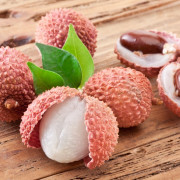Orange tree at home - washington orange led
Content:
- History of appearance as a house plant
- Common varieties
- Healing properties
- Features of orange care
- Features of keeping in winter during the rest period
- When and how an orange blooms
- Pruning a tree: how to shape properly when grown indoors.
- How to propagate an orange yourself
- Transfer in an apartment
- Possible problems with orange farming
Orange can be grown in an apartment. If you create good conditions for him, he will begin to bear fruit. However, in most cases, indoor orange is bred because of its beautiful leaves.
History appearances at quality home plants
Orange is considered a representative of the Rutov family, and is native to the eastern part of Asia. This type of citrus is very popular. Its history begins 4 thousand years BC in the southeast of Asia.
Since the orange grows rather poorly in unprotected soil, glazed greenhouses were equipped for its maintenance. Then they began to grow an orange tree at home.
Common varieties
One of the well-known homemade varieties is the Washington Navel orange. It is characterized by excellent taste. A medium-sized tree with a spreading crown and rich green foliage. Flowers are white in color, collected in small inflorescences with a pleasant smell. The fruits are round in shape with a navel at the top and are large in size. Average weight 0.5 kg. The skin of the fetus is generally smooth or rough and separates well from the fetus. The fruits ripen at the end of the year. The pulp is divided into 13 sectors by partitions of medium thickness and contains a large percentage of juice. A culture of this type is propagated with the help of cuttings, especially when wetted in growth-stimulating substances.
Pavlovsky. The description of the variety boils down to the following: it is very good for growing in apartment conditions. The tree grows up to 100 cm in height with beautiful, bright green leaves. The flowers of this variety are white, collected in bunches, with a pleasant aroma. The fruit itself is round, with a bright orange color. The culture is bred using cuttings in late winter, early spring.
Therapeutic properties
Orange leaves contain many beneficial substances, which are rich in fiber and antioxidants. Each cup of tea brewed from the leaves contains iron and manganese. Infusion of orange leaves is used as a remedy against inflammation, to normalize the activity of the cardiovascular system.
Features of the leaving behind orange
This inhabitant of the tropics likes warm air, so it is best to keep it in rooms located in the southern part of the apartment. Homemade orange is very picky about the surrounding crops.
Lighting
Home orange loves good lighting. Therefore, the pot with it must be placed where there is no lack of light, and additional lighting must be made.
Temperature
The most acceptable temperature is considered to be from +24 to +26 ° C in summer and not lower than +12 ° C in winter. In very hot weather, flowers begin to dry and fall off, and the tree itself stops growing.
Watering
Good watering has a positive effect on the orange, so the soil should not be allowed to dry out too much. The watering time is determined as follows: you need to pick up a piece of soil at a depth of 4-9 cm and try to roll it into a ball, if this fails, you should water it.
In summer, the culture is watered every day, in winter once a week. Pour with settled, warm water.
Spraying and humidity
Orange has a positive greenhouse effect. The air humidity level acceptable for him is at least 85%. Spraying must be carried out several times a day.
Top dressing
When applying fertilizers, the main thing is not to overdo it. There should be an equilibrium in the required substances. It is recommended to purchase ready-made ones.
Priming
Oranges are very demanding on the soil, so choosing the right one for them is not so easy. Many different substrates for such crops are available today. This soil already contains all the required nutrients and vitamins.
Features of the content in winter at period rest
In winter, the optimum temperature for the crop is + 12 ° C, which guarantees the formation of a large amount of fruit in the future. Watering should be done twice every seven days, no fertilization is required. Since the daylight hours are short in winter, you should not forget about additional lighting. The air should be humidified more often or humidifiers should be used.
When and as blooms orange
It has bisexual flowers, rather large, up to 50 mm in size. The flower consists of five white petals, but it also happens with a reddish tint.
Views and shape flowers
Flowers are collected in inflorescences in the form of a brush, several pieces. There are also single flowers, but they are rare.
Period flowering
Orange flowers usually appear in spring. Some homemade varieties bloom all year round.
how care behind orange in time flowering
In order for the culture to bloom normally, you need to create certain conditions in the room. The buds, which are formed in the spring, bloom at temperatures from +17 to +19 ° C degrees.
Pruning wood: as right shape at growing at the premises.
An indoor tree can not be cut, you only need to remove excess shoots. They are usually pruned at the onset of spring.
how multiply orange by yourself
Culture propagation is usually carried out in three ways: by grafting, cuttings, layering and seeds. At home, the most common breeding method is by using cuttings. This method makes it possible to get fruit-bearing trees after 5 years.
Rooting stalk
Cuttings are cut from a healthy tree and should have several normally developing buds. The cuttings are rooted using a container with soil, but you can do this simply in water. Rooting takes place within a crescent.
Graft
Vaccinations are carried out in the spring, during the period of intensive growth and sap flow. Cuttings undamaged by diseases are used. Do not cut the vaccination site, but cut it straight off. Connect the graft and stock so that they have the same cambial layers. For this, the cut diameter must be equal in size. Now press the branches as tightly as possible and wrap them with material. The vaccination site must be wrapped in polyethylene to create conditions of high humidity.
Layers
Reproduction is carried out as follows: from a crop that is distinguished by good fruiting, the best and healthiest branch is chosen, the length of which is up to 0.3 m, and the thickness is 60 mm. Having stepped back from the lower edge of 100 mm, two annular cuts are made, at a distance of 120 mm between them. The incised bark is removed. All foliage that is located 50 mm above and below this place is removed.
A light plastic container is cut in half and suspended from a branch so that the cut falls on the center of the container. Now the two halves of the container are tied together and filled with washed sand or moss, previously treated with steam. The filling should not be dry, so it is poured over with warm water. After 2-3 months, you can cut off the branch and, together with the substrate, plant it in a container with a diameter of at least 13 cm. The cut is powdered with charcoal. After planting, the container with a layering is placed in a shaded room and constantly sprayed.
Seeds
Planting material is best taken from ripe fruits.
The selected planting material must be prepared for planting:
- free from pulp residues and rinse with settled water;
- hold the day in water where fertilizers are diluted.
The seeds are planted in a separate container with a capacity of at least 0.1 liters. You can use jars of yogurt., You need to make holes in them to drain excess moisture and ensure good drainage. Seeds are buried at least 10 mm deep. The soil can be purchased ready-made, or you can make it yourself in 1 to 1 fractions of garden soil and peat.
Transfer at apartment
You need to replant a young orange every year; the one over 5 years old - every three years; more mature - once every 8 years.
It is better to transplant the orange by transferring it into a large container. This allows you to protect the roots from damage and not harm the culture itself.
Possible problems with orange farming
When growing an orange indoors, certain problems can arise:
- The tips of the leaves dry. This is due to the lack of nutrients. Especially Fe, N. the lack of the first element leads to yellowing of the veins, the second to the yellowing of the entire leaf as a whole. To eliminate the problem, the crop must be fed with fertilizers containing iron. Nitrogen fertilizers should be fed to the crop in the spring.
- Pests. Orange is susceptible to harmful insects that cause damage to the leaves, usually worms and spider mites. You can fight them by constantly washing the culture with water, as well as using insecticides.
- Diseases. Among them, spotted chlorosis is most common, it is spread by insects and causes yellowness of the leaf areas between the veins. To combat this ailment, you just need to destroy the damaged areas.
- Exposure to low temperatures. The lowest temperature that an orange can withstand is +2 degrees, so you need to protect the culture from exposure to negative temperatures.
- The crop sheds buds, this may be due to too high temperature, insufficient watering, and excessive fertilization. To fix the problem, you need to create the appropriate conditions.
- The leaves turn pale and fall off. The problem may be related to root decay. It is necessary to check the root system and remove damaged roots.
Thus, it is not at all difficult to cultivate oranges, you just need to create the necessary conditions for the culture.
